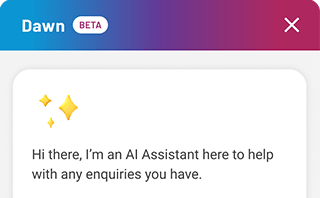Imagine you’re driving down a freeway and there’s an incident ahead. Traffic flow halts. You inch forward now and then, but mostly you’re at a standstill.
Now apply this scenario to obstructive sleep apnea. Think of the traffic as your airflow and your airway as the freeway.
Like the experience of driving in heavy traffic, when you have an apnea, the airway (road) becomes blocked and there’s nowhere for the air (traffic) to flow.1
When you have obstructive sleep apnea (OSA) your airway collapses while you’re sleeping.2 This leads to apneas (complete pauses in breathing) and hypopneas (when your airway becomes partially blocked).2
These breathing episodes can disrupt your sleep cycle, causing you to wake up many times throughout the night, often without you even realising it.2
An apnea occurs in the same way that traffic can become disrupted due to a traffic signal failure. An apnea happens because the muscles surrounding the airway fail to activate to allow air to pass through.1
Let’s turn to our freeway analogy again. You’re stuck in heavy traffic and the lane starts to move. Then suddenly, the flow halts again, forcing you to slam the brakes repeatedly.
With sleep apnea, you’ll go through a similar situation where your breathing stops and starts over and over again. As you drift further into deep sleep, the airway continually becomes obstructed, triggering a wake-up response.1 You become stuck in an endless loop of wakefulness and fragmented sleep.
You might stop breathing anywhere from 10 up to 90 seconds per apnea.3 But you often won’t notice it.3 On the other hand, your partner may be aware as these brief wake-ups can be accompanied by large gasps for air and snorting or choking sounds.4
Those people with normal sleep will have no more than 5 apneas per hour.2 If you experience interruptions above this number, you may be diagnosed as having sleep apnea.
There are a lot of physiological changes that can take place when you’re not getting enough air into your lungs.
During an apnea, the oxygen in your blood falls while the level of carbon dioxide rises.1 This can put stress on your heart and increase blood pressure and heart rate.1
Because of the frequent awakenings, many people will experience a shorter sleep duration and lower sleep quality.1 As a result, people with sleep apnea often report experiencing daytime sleepiness.2
Let’s face it, we’ve all felt the frustration of sitting in slow-moving traffic at some point in our lives. You know when your mind starts wandering off as you lose focus and every minute feels like an hour.
This is what you might feel like after a poor night’s sleep with OSA. Fatigue, diminished alertness and irritability are all common symptoms of this sleep disorder.2
But identifying sleep apnea can be challenging. Symptoms may seem unrelated or could potentially be attributed to other causes.
However, a good rule of thumb to see if you may have a problem with your sleep is to ask yourself whether you feel tired and lack alertness at inappropriate times.5 This might include occasions such as during conversations and work meetings, or in severe cases while driving.5
Like the speed limits set on our roads to regulate the maximum speed of travel, there are certain thresholds used to determine the severity of OSA.
Levels of severity are generally based on the number of times your breathing is interrupted (per hour):2
• Mild sleep apnea: Between 5 and 15 times
• Moderate sleep apnea: Between 15 to 30 times
• Severe sleep apnea: More than 30 times
The measurement criteria used above is known as the apnea-hypopnea index (AHI). If you do a sleep study, you may notice an AHI reading on your results.
If you identify with these experiences, don't suffer in silence. Seeking help is crucial for your well-being and overall health. A sleep study can accurately diagnose sleep apnea, and once confirmed, several treatment options are available.
One of the most effective treatments for sleep apnea is continuous positive airway pressure (CPAP) therapy.6 CPAP machines deliver a steady stream of air through a mask, keeping the airway open and preventing obstructions during sleep.
Additionally, lifestyle changes like weight loss, avoiding alcohol and sedatives, and sleeping on your side can also help alleviate symptoms.2
Remember, there's hope, and with the right treatment, you can break free from the traffic jam of sleep apnea and enjoy a smooth ride to restorative sleep!
ALWAYS READ THE LABEL AND FOLLOW THE INSTRUCTIONS FOR USE.
You should speak to your doctor about your symptoms and whether a CPAP device is suitable for you.
ResMed

Chat anytime with our AI-powered, digital assistant Dawn for instant CPAP support and sleep health insights. Think of Dawn as your personal guide in the digital library of sleep and ResMed information. Access 24/7 sleep support now.
Stay up to date with the latest products, news, offers and tips for Sleep Apnea, Snoring, Insomnia and overall good Sleep Health.
Post a comment